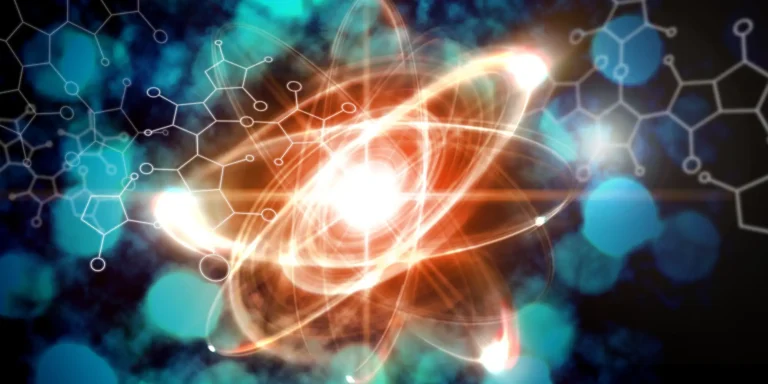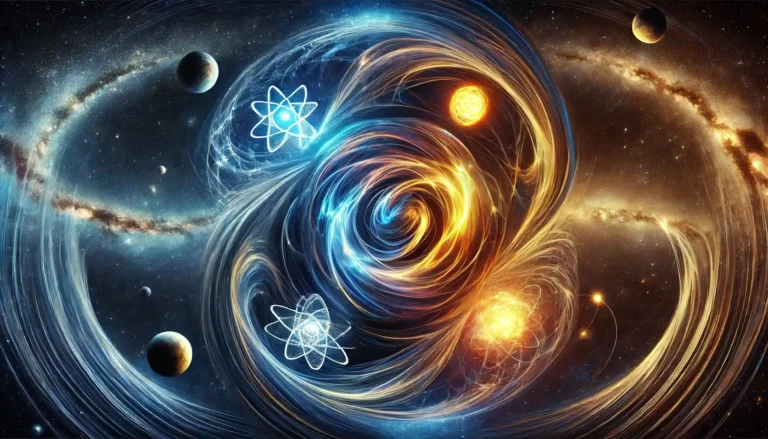The Big Bang Theory
The Big Bang Theory: Cosmology
The Big Bang theory is a scientific explanation of the origination of the universe. At present, it is the most accepted and observationally proven theory. The Big Bang theory explains not only the creation of the universe, but also its expansion, shape, and its future.
This theory is characterized by the universe coming into existence at a moment in time as opposed to the continual process. The universe, according to this theory, was initiated between 13.75 billion years ago from a very dense and hot point-like state.
The Big Bang Concept
In 1924, the scientist Edwin Hubble first observed through a telescope that the distant galaxies are moving away from one another. This would therefore mean that the universe is expanding and that in the past, it was placed at a single point in space.
Using the Big Bang theory to analyze the past as it stands today, the universe indeed appeared to arise from a primeval, dense state in which all matter and energy were in an extremely hot and dense form.
However, what lay before this state is what has no evidence among scientists. General relativity predicts the existence of a gravitational singularity to explain the time before the Big Bang.
The term “Big Bang” loosely refers to the intense explosion from a primordial point, from which the entire universe came into being.
It can also be used to refer to the cosmological theory that explains the origin and nature of the universe. By itself, the theory gives mankind a peek at how the oldest objects of the universe came into existence.
One of the crucial results of the Big Bang was that the state of the universe in present times is vastly different from what it was in the past or what it will be in the future.
History of the Big Bang Theory
The Big Bang theory was born out of the efforts to explain the structure of the universe. Early astronomers observed that most spiral nebulae were moving away from Earth. Later, it was understood from a cosmological point of view that those nebulae were not nebulae at all; they were galaxies outside the Milky Way.
The equations of Friedmann in 1927 are independently derived by Georges Lemaitre, a Roman Catholic priest from Belgium, by using the field equations of Einstein. Originally, the said field equations were found by Einstein for his theory of general relativity.
By means of the recession movement of the spiral nebulae, Lemaitre postulated that the universe today came from what was called a primeval atom, which later gained the name Big Bang theory.
Two years later, Scientist Edwin Hubble provided the observational evidence in support of Lemaitre’s theory. Hubble found out that the light from the galaxies, as depicted from Earth, was redshifted-the galaxies were pulling away and the redshift depended on their distance away from Earth.
The farther away a galaxy is, the greater its light spectrum shifts towards red, denoting an increase in the wavelength of light. This phenomenon has come to be known as Hubble’s Law.
Competing Theories and Naming the Big Bang
Two options became apparent. One was Fred Hoyle’s steady-state model. It was a hypothesis in which new matter could be created as the universe expanded. This model said the universe has always been the same throughout the years. The other option was the Big Bang theory by Lemaitre, further developed by George Gamow.
Interestingly, it was Fred Hoyle who named Lemaitre’s theory the “Big Bang.” It was during a BBC radio broadcast in 1949 that Hoyle refered mockingly to Lemaitre’s theory as the “Big Bang.” The name, however, stuck.
He continued to use the term in various other broadcasts, especially in a series of lectures on the nature of matter in 1950. Those lectures went into print in *Listener*, which “Big Bang” appeared in print for the first time.
Finally, in 1964, with the discovery of cosmic microwave background radiation, the Big Bang theory gained acceptance as the best explanation of the origin and evolution of the universe.
The Big Bang Theory in Modern Cosmology
The Big Bang theory is considered one of the main concerns of modern cosmological studies that aims to outline the process of galaxy formation and evolution. In their scientific efforts, scientists also study the reason and mechanism of the Big Bang itself.
The development of the current cosmological theories is greatly based on the explanation of actual observations in correspondence with the fundamentals of the Big Bang theory.
Indeed, from a combination of three types of measurements, the age of the universe is 13.7 ± 0.2 billion years. The three measurements are as follows.
1. Measures of the expansion rate from Type I supernovae
2. Measures of the temperature fluctuations in the cosmic microwave background
3. Measures of the correlation function of galaxies.
These three independent sets of measurements are just fantastic evidence for the Lambda-CDM model, which accounts in detail for everything from the universe. The universe, at its inception, was homogeneous and isotropic, and its matter was at very high-energy density, temperature, and pressure.
The Timeline of the Creation of the Universe
About 10^-43 seconds after the Big Bang, or more accurately, laws of physics started to take effect. It was a time called the Planck time. A phase transition at around 10^-35 seconds after the Planck time started cosmic inflation.
Since that moment, the expansion of the universe has become exponential in character. When the cosmic inflation stopped, the universe became filled with quark-gluon plasma.
Within one point of space-time, in this plasma took place a reaction wherein the baryon number conservation law was infringed. Due to this process, there was a slight excess in the number of quarks and leptons compared to their corresponding antiparticles-a part in 10 billion. This process is called baryogenesis.
As the universe continued to expand, it cooled down further, causing its temperature to drop below a critical point where the symmetry of physical forces got broken-called symmetry breaking-which gave way to the fundamental forces that make up physics as unifications into separate forces.
It was now possible, in this epoch, to form basic particles like quarks, which still exist in their pure form today. Quarks and gluons combined to form baryons, such as protons and neutrons.
As the universe continued to expand and cool, protons and antiprotons destroyed each other, leaving behind a small surplus of protons that exist to the present day.
First Generation of Atoms and Galaxies
Approximately 380,000 years after the Big Bang, electrons could combine with atomic nuclei and form neutral atoms, mostly hydrogen. It was this that freed radiation and allowed it to propagate freely in space, constituting today’s cosmic microwave background radiation.
As the universe continued to expand further, matter started clumping together under the influence of gravitational forces and thus formed the first stars and galaxies. Such first structures constituted the building blocks of the universe as we know it today.
Dark Matter and Dark Energy in the Universe
By this time, three kinds of matter had already existed in the universe. These included:
Cold dark matter
Hot dark matter
Baryonic matter
Precise data from the satellite WMAP informs that the cold dark matter constitutes approximately 80% of the Universe. On the other side, the hot dark matter and the baryonic matter constitute the remaining 20%.
Up till now, a ghostly or invisible form of energy known as Dark Energy has become dominant in most of the Universe, as most of its mass and energy fall within its tag. Dark Energy and Cosmic Expansion
The expansion of the universe is, consequently nonlinear-a consequence, in general, of dark energy. It is the force that keeps objects accelerating in space when moving from one another and trying to overcome the gravitational pull between them.
Conclusion:
The Big Bang theory, supported by various measurements and observations, stands as the most comprehensive explanation of the origin, evolution, and eventual fate of the universe.

















